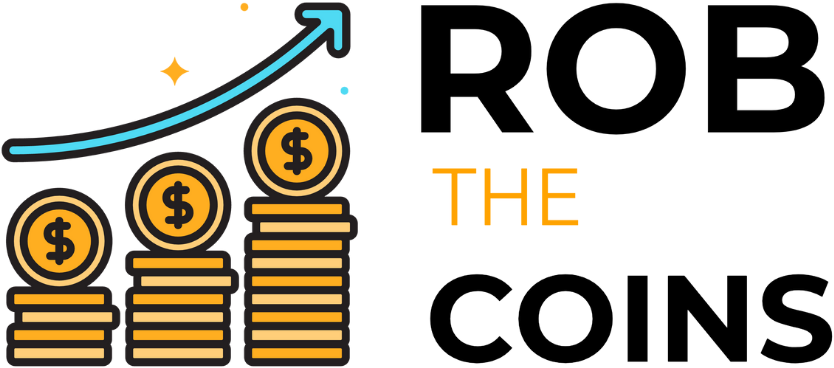Where there was cryptocurrency and blockchain technology, there was DeFi, NFTs, and smart contracts. All three require complicated content management systems of their own, rapid, secure, and malleable enough to, for example, change with the times, as so many new developments within the metaverse happen overnight. However, a content management system that is older than such advancements will fail, for it is typically monolithic, all-in-one, single-location solutions with inflexible architectures. To connect your wallet seamlessly, please ensure you add the custom rpc for the specified blockchain network to access all crypto-related functionalities.
A Headless CMS is a flexible, powerful way to get content live, controlled, and published with cross-channel efficiency for new crypto startups, blockchain companies, and DeFi firms. Decoupling the back end of the content management system from the delivery front end enables crypto firms to have a greater level of flexibility, security, and performance to produce engaging content delivery not only for websites/apps but also for any blockchain-related applications. For developers, the advantages associated with a headless CMS are even clearer and that’s without mentioning the additional capability to create and publish real-time crypto news, market updates, NFT drops, or dApp-related information allowing their blockchain companies to rise to the top.
Enhancing Real-Time Crypto Market Updates and News Distribution
There’s news breaking every second in crypto, and traders, investors, and enthusiasts alike need information in a flash to make their moves in time. A centralized CMS makes news outdated, takes too long to render relevant and effective, and fails in the end since it cannot sustain such immediate, pressing news dissemination. A Headless CMS allows crypto firms to make changes to their websites, trading platforms, applications, and even their blockchain-based offerings at the drop of a dime.
Moreover, real-time, news-driven crypto exchanges and aggregators have been known to push price changes, regulatory developments, and market data as soon as it happens and not a moment sooner via the API delivery system so that their users are as informed and educated as possible. For instance, a crypto exchange utilizing a Headless CMS can dynamically generate a list of Bitcoin, Ethereum, and altcoin prices so that traders have up-to-the-minute accurate figures across any channel/device with the right content. The developer-driven integration through crypto APIs, dynamic content generation, and superior UX on the spot proves the benefit of having a headless CMS.
Improving Security and Transparency in Blockchain Content Management
Security will forever be an issue with crypto transactions, smart contract interaction, and ownership of decentralized assets. Thus, uncomfortability regarding development is common. Standard CMS operates in regulated spaces even if security is an uphill battle. For example, a regular CMS has content in one location. Hackers breach that one location, and they have access to everything personal information, points of entry, and points of storage. Too many people have the ability to inappropriately access or alter information, and to the blockchain devotee, this is a warning sign. However, a Headless CMS has what it needs in one location, but not necessarily where it gets rendered.
An API-first approach allows access only by authenticated users into what makes up the CMS and encryption standards allow for protection of assets before they come into the Headless CMS. How headless CMS empowers developers is reflected in its ability to integrate with blockchain security protocols, providing an extra layer of protection against fraudulent activity and unauthorized content modifications.
Streamlining NFT Marketplaces and Digital Collectibles Content
NFT (non-fungible tokens) are the latest form of digital collectibles that challenge our understanding of the current cultural marketplace. From millions of digital furniture/game assets available to digitally rendered artworks and virtual real estate in decentralized marketplaces, an ever-growing appeal for NFTs exists in today’s market. Whether the NFT comes with metadata (information about the creator with credits/updates on transfers of ownership), a digital catalog shows popular works. Thus, there is a demand for a scalable, multifunction Headless CMS to control/manage what is digitally displayed and accessible from the asset. A Headless CMS can quickly save and change anything associated with the development of NFTs.
In addition, NFT marketplaces provide content about NFTs that will always be updated and available on any front be it a website or a VR peripheral since the APIs link the NFT to its blockchain and various decentralized storage locations and smart contracts. For instance, a Headless CMS allows an NFT gaming project to change in-game NFTs, change marketplace offerings, and change collectibles sent from user to user, whenever, updating all associated metadata, descriptions, and ownership information in real-time. Therefore, when it comes to development, it’s clear how a headless CMS helps developers but improves user experience for NFTs; it’s a malleable, expandable content solution for little dev opportunities within expanding marketplaces.
Supporting Multi-Language and Multi-Platform Crypto Adoption
Who is the target audience of cryptocurrency? That’s the beauty of it everyone. Investors, traders, and blockchain developers exist worldwide in every language. Yet, a traditional CMS may further complicate localization since every language, nation, and platform requires individual updates. This results in content discrepancies and redundancies while failing to create the avenues for scaling cryptocurrency content globally. A Headless CMS allows this worldwide content management to be much simpler, for crypto-based platforms can internationalize their content and disperse it across languages, nations, platforms, and devices without a problem. Developers and investors will receive the same quality content as regulators, regardless of where they are located and what language they speak.
For example, a crypto education platform operating on a Headless CMS could generate all its crypto market overviews, blockchain tutorials, and DeFi investment tips automatically in every global language the second it’s published, and audiences worldwide can receive accurate information in their languages. It’s clear for this type of global content generation that a headless CMS is helpful to developers and crypto companies wouldn’t have to do anything.
Future-Proofing Blockchain Content with Scalable Architecture
With blockchain, the sky’s the limit layer 2 scaling, DAOs, and so forth, even the next iteration of Web3. A CMS for all time won’t suffice; crypto brands will have to reinvent their content structure eon after eon. As a baseline for content solutions on blockchain, a Headless CMS allows brands to quickly align with new dApps, updates on Web3, or within the metaverse. Its nimble, API-first structure allows fintech and blockchain brands to expand their offerings without disruption to content creation and publishing.
Where a metaverse initiative is concerned, for instance, a Headless CMS provides information for virtual assets, low-latency digital engagement is never sacrificed, gamified blockchain initiatives, and NFT transferability across channels is possible. Where headless enables developers to be unbound is through the ability to be adaptable as blockchain technology changes and the potential for omnichannel distribution for decentralized universes.
Enabling Decentralized Content Distribution for Web3 Platforms
Web3 transforms content creation, distribution, and monetization. When it comes to the internet, what sets Web3 apart from the traditional web is centralized servers and ownership of content; what makes it different is the potential for ownership and access, and stimulation of interaction, all at the fingertips of the user via decentralized, transparent opportunities on a global scale. Yet many traditional CMS did not establish themselves with such decentralized beginnings. Thus, for those looking to engage with blockchain down the line, creating, maintaining, and accessing content in these decentralized spaces is difficult. That’s the beauty of a Headless CMS – any Web3 content needed could be created upon access.

And there are endless possibilities for decentralized storage. Through something like IPFS or Arweave and decentralized databases, content/assets can live in the cloud, uncensored, with no single person or corporation in control, accessible to the public with none of the potential security threats of a more centralized solution. For example, a DAO using a Headless CMS can house governance proposals, changes to voting and community guidelines in one secure, yet decentralized space, while decentralized content is readily accessible across multiple blockchain locations. Where headless CMS offers developers advantages is in the ease of integration with Web3 protocols and decentralized dissemination for the metaverse.
Conclusion
Cryptocurrency and blockchain-related industries require a content management system as dynamic, secure, and rapid as their own operation decentralized creation, instantaneous and worldwide engagement requires a content management system that flows just as seamlessly; outdated CMSs do not meet these requirements. Thus, a Headless CMS would be advantageous for crypto startups, NFT exchange companies, and DeFi projects.
A Headless CMS allows blockchain companies to improve security, adjust to cryptocurrency developments in real-time, enhance multilingual options, and be readily integrated with new cryptocurrency developments. From an NFT company needing to alter metadata to a publication that needs to publish DeFi white papers to a currency exchange that requires a dynamic site for effective trading purposes. Decentralized content operations, blockchain APIs, and Web3 integration. It’s easy for developers to adopt a Headless CMS. As the future is digital currency and blockchain, a Headless CMS will provide longevity, dependability, and adaptability.



